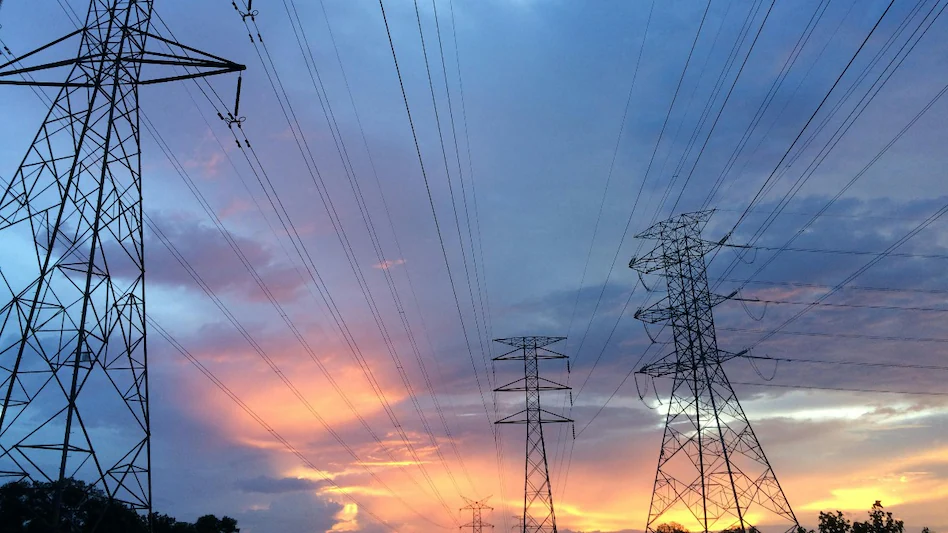- Courses
- GS Full Course 1 Year
- GS Full Course 2 Year
- GS Full Course 3 Year
- GS Full Course Till Selection
- Online Program
- GS Recorded Course
- NCERT (Recorded 500+ Hours)
- Polity Recorded Course
- Geography Recorded Course
- Economy Recorded Course
- AMAC Recorded Course
- Modern India, Post Independence & World History
- Environment Recoded Course
- Governance Recoded Course
- Science & Tech. Recoded Course
- International Relations and Internal Security Recorded Course
- Disaster Management Module Course
- Ethics Recoded Course
- Essay Recoded Course
- Current Affairs Recoded Course
- CSAT
- 5 LAYERED ARJUNA Mentorship
- Public Administration Optional
- ABOUT US
- OUR TOPPERS
- TEST SERIES
- FREE STUDY MATERIAL
- VIDEOS
- CONTACT US
Electricity 2025 Report
Electricity 2025 Report

- In February 2025, the International Energy Agency (IEA) released its Electricity 2025 Report, outlining key trends in global electricity consumption, emerging technologies, and the growing challenges faced by the energy sector.
- It sheds light on increasing electricity demand growth, particularly in emerging economies like China and India, while also addressing the evolving energy mix and the increasing influence of weather-dependent renewables.
Key Findings
Global Electricity Demand Growth
- Strong Global Growth:
- In 2024, global electricity demand rose by 4.3% and is forecast to grow at an average rate of nearly 4% per year until 2027.
- This growth is largely driven by industrial production, rising use of air conditioning, and the expansion of electric vehicle charging and data centres.
- The increase is substantial, with a projected additional 3,500 TWh of global electricity demand, roughly equivalent to adding the entire electricity consumption of Japan every year.
- Regional Breakdown:
- China will remain the dominant player, accounting for more than half of global electricity demand growth in 2024.
- China's electricity consumption is expected to grow by 6% annually until 2027, driven by industrial growth, electrification, and increased air conditioning demand.
- India is projected to experience a 6.3% annual growth in electricity demand, outpacing its historical growth rate of 5%.
- This surge is supported by economic expansion, increasing air conditioner ownership, and government schemes facilitating solar energy access.
Electricity Demand in Emerging Economies vs. Advanced Economies
- Asia's Rising Share:
- By 2025, Asia is set to consume half of the world’s electricity, with China playing a pivotal role. China’s share of global electricity consumption will increase from a quarter in 2015 to nearly 1/3rd by mid-decade.
- In contrast, Africa, despite being home to 20% of the global population, will account for only 3% of global electricity consumption by 2025, highlighting the need for significant investment in electrification across the continent.
- Advanced Economies:
- Electricity consumption in advanced economies like the United States, European Union, and Australia is beginning to rise again, reversing the flat or declining trend seen over the past 15 years.
- Factors contributing to this growth include increased use of electric vehicles, air conditioners, and data centres.
The Shift in Energy Sources: Renewables and Nuclear Power
- Dominance of Low-Carbon Sources:
- The IEA forecasts that renewables (solar, wind, hydropower) and nuclear power will meet nearly 95% of global electricity demand growth through 2027.
- This is crucial for limiting the rise in greenhouse gas emissions from the power sector.
- Solar power, particularly solar PV, will see significant growth, contributing around 50% of global electricity demand growth.
- Solar power surpassed coal in the European Union in 2024, and the same is expected in China, India, and the United States.
- Nuclear Power Expansion:
- Nuclear power generation is projected to rise steadily, reaching new highs by 2025. The recovery of French nuclear output, new reactors in China, India, and Korea, and restarts in Japan are key drivers of this growth.
Impact of Weather on Electricity Systems
- Weather-Dependent Challenges:
- A significant concern highlighted by the IEA is the growing weather dependency of electricity systems. Extreme weather events such as heatwaves, droughts, and storms in regions like the United States, China, and India have caused widespread power disruptions in 2024.
- With the rising share of weather-dependent renewables like wind and solar, power systems are increasingly vulnerable to fluctuations caused by weather conditions. The IEA stresses the need for greater system flexibility to handle such disruptions.
- Flexibility and Security:
- The flexibility of power systems will be crucial in ensuring security of supply and network resilience. Policies to improve demand-side response, energy storage, and interconnection of grids are seen as essential to mitigate the risks posed by extreme weather events.
Global Carbon Emissions and the Path to Net-Zero
- Stabilizing of CO2 Emissions:
- Global carbon emissions from electricity generation are expected to plateau (stay at same level) from 2025 to 2027, following a 1% increase in 2024.
- While this is a positive sign, emissions remain the highest in any sector globally, and further efforts are needed to reduce them.
- Coal-fired generation is projected to stagnate, while gas-fired generation will see moderate growth, particularly in regions like Asia and the Middle East.
The Role of Asia in Shaping Global Electricity Trends
- China’s Influence:
- China’s electricity demand will continue to grow rapidly. This is set to make China the world’s largest electricity consumer, surpassing the combined consumption of the EU, the United States, and India.
- India’s Growing Demand:
- India is on track to meet its rising electricity demand through both thermal power and a growing share of renewable energy.
- India’s focus on solar energy, coupled with increasing investments in nuclear power, will play a key role in meeting this demand sustainably.
Electricity Price Trends and Market Challenges
- Price Volatility:
- While wholesale electricity prices declined by 20% in some regions in 2024, volatility remains a key challenge.
- Events like Dunkelflaute, where wind and solar generation are at low levels, have led to price spikes, underscoring the need for more flexible supply options like storage and demand-side response.
- Dunkelflaute is a weather phenomenon typically arises in winter, partly due to shorter daylight hours and the correspondingly lower number of sunshine hours.
- As a result, solar and wind energy yields are reduced, while electricity demand is seasonally high. A "Dunkelflaute" can last for several days.
- Policy Adjustments:
- The IEA calls for updated regulatory frameworks and market designs to encourage investments in flexibility solutions, such as better storage systems and more responsive grid operations.
Conclusion
The IEA’s Electricity 2025 Report highlights the profound shifts underway in the global electricity landscape. As demand surges, particularly in emerging economies, and as renewables take center stage in the energy mix, nations must deal with the challenges posed by extreme weather and the need for system flexibility. The transition to low-carbon energy sources is accelerating, but the path ahead requires significant investments in resilience, technological innovation, and regulatory reform to ensure a secure, sustainable, and affordable power supply for all.
|
Also Read |
|
| FREE NIOS Books | |




